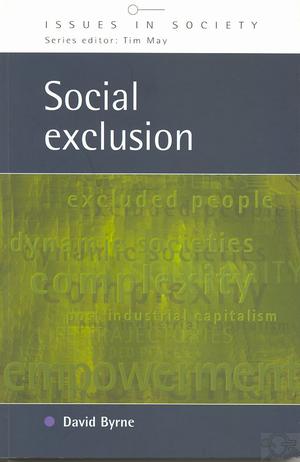Social exclusion
İÇİNDEKİLERContents Series editor's foreword Acknowledgements Introduction Structure of the book Part one 1 The possessive individualists: blaming the poor Residuums, underclasses and redundant populations Citizenship? 2. Order and solidarity: collectivist approaches 3.Exploitation matters: Marxist approaches to exclusion The industrial reserve army Regulation theory: transition codified - post-industrial capitalism: the means specified Social proletarians: underdevelopment as exclusion Conclusion Part: two 4 Dynamic society - dynamic lives Post-industrial, postmodern, post-socialist? Advanced industrial societies towards the year 2000 The complex dynamics of social exclusion Understanding the complexity of dynamicsviii Social exclusion 5 The dynamics of income inequality From relative equality to inequality: the phase shift in income distributions Gender and income inequality Race/ethnicity and exclusion The exclusion of the young in post-industrial capitalism Dynamics: the significance of life courses Making it unequal: the role of post-industrial policy Speenhamland and the new enclosure: taxation, benefits and Welfare to Work 6 Divided spaces: social divisions in the post-industrial city Divided cities: the reality Race/ethnicity and exclusion through space Gender and exclusion through space Age and social exclusion through space 'Communities'? Making excluding space: the role of social policies Conclusion Conclusion: what is and what is to be done about it The excluded many, the 'at risk' most, and the excluding few Can we do nothing? Is politics powerless? A solidaristic politics: agents and methods Notes Bibliography Index    |



